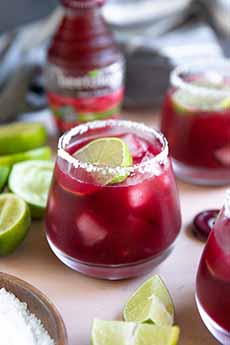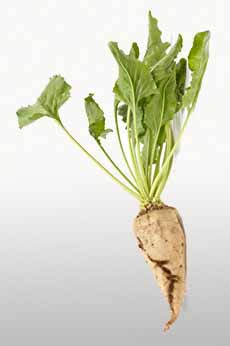TOP PICK OF THE WEEK: Beetology Flavored Beet Juice
|
|
The formal name of beets is beetroot; they are roots of a plant. In the U.K., they’re still known as beetroot. In the U.S., we’ve shortened it to beets. We love beets, consuming at least two packages of Beetology’s ready-to-eat beets each week. But you also can drink your beets! In addition to their nutrient-dense, numerous health benefits, beet juice is the equally delicious version of a meaty beet. Ready-to-drink beet juice has been available, probably, since juice-in-a-jar found its way to grocers’ shelves. Beetology wants to make it more accessible, by combining plain beet juice with other juices, for more layered flavoring: In addition to a chilled glass of beet juice, you can enjoy beetology in: Here’s a store locator. Beets are members of the Amaranthaceae or amaranth family, a group of flowering plants. The common beet is known botanically as Beta vulgaris. Other family members include chard, lamb’s quarters, quinoa, spinach, other edibles, and plants used for medicinal purposes. Wild beets, also called sea beets (Beta maritima), originated along the coasts of Eurasia. They were domesticated in the Middle East, grown by the Ancient Egyptians, Greeks and Romans. At the beginning, beets were grown primarily for their greens, which were eaten and used medicinally. The fleshy red taproot* underground, which we eat today, was not on the menu. It was fed to animals. The ancient Romans also used the beet medicinally, but were the first to cultivate the plant for its fleshy, red root. How about an aphrodisiac? The earliest cultivated beet was longer rather than wider; it more closely resembled a parsnip (photo #5), like the modern sugar beet (Beta vulgaris subsp. vulgaris); sometimes a cylinder known as the Mangel-wurzel. Today’s familiar bulbous shape began appearing near the end of the 1500s. You can still find heirloom seeds for the longer style, including this cylindrical variety in yellow. Beyond red beets, over time, mutations and hybrids led to a rainbow of beets, most commonly in orange, pink, yellow, white, and striped (chioggia). Sugar became perhaps the most valuable use of beets. In 1747 Andreas Sigismund Marggraf, a chemist from Berlin, discovered a way to produce sucrose from beets. His student, Franz Achard, perfected thw method for extracting sugar. The King of Prussia was convinced to subsidize a sugar beet industry, enabling the first processing plant to be built in what is now western Poland. It turned out to be a solid investment! |
|
|
Today, around 20% of the world’s sugar comes from sugar beets instead of sugar cane. Since beet sugar production uses four times less water than sugar cane production, it’s better for growing sugar in arid countries like Egypt, as well as in water-restricted areas of Europe. ________________ *A taproot is a large, central, very thick and dominant root from which other roots sprout laterally. It tapers in shape, and grows downward. In modern times, the root itself is the main food, while the stems and greens, that grow above ground, may also be eaten. Popular taproots in our diet include beets, burdock, carrots, radishes and turnips.
|
||







